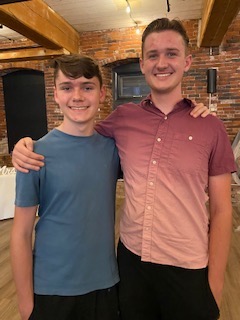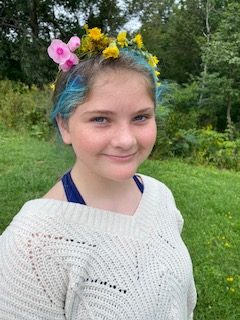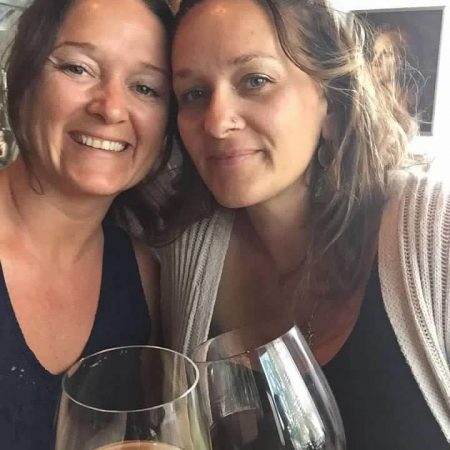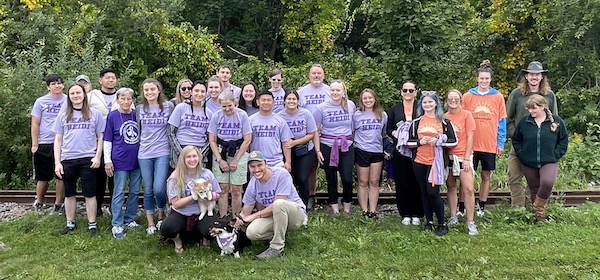A good news update!
On 12/16/2022, I received this update from Chani about her daughter Claire.
September 8th we met with another Chiari specialist — Dr Klinge in RI. After a surgery consult and collecting all of the records and images, she scheduled her for tethered cord release surgery for October 3rd. Three weeks post op our girl, for the first time in her life, described her pain level aa zero! She has been thriving ever since! She also gained almost 2 inches in height, and has no more headaches! She has a sparkle in her eye and is shedding all the mental stuff she had to endure with doctors not listening to her! She thanked her surgeon on her post op for giving her at least the last 5 years of her childhood pain free! We are over moon excited for her! Thank you for writing such stories and bringing light to Chiari and all of the little friends that come with it! So very happy to give this update! Much gratitude! Chani
A woman with a mission
Chani Cochrane is a woman with a mission. She and two of her five children have forms of a rare condition called Chiari (key-AR-ee) malformation. Since her son was diagnosed in 2011, she has made it her mission to educate herself as much as possible about Chiari so she can be an advocate not only for her family but also for others. In addition, she organizes an annual Chiari walk to raise money and awareness. Chiari is rare and Chani has found that she sometimes gets conflicting information from the many doctors they’ve seen over the years, which brings me to her mission — to get doctors on the same page when it comes to diagnosing Chiari and related conditions.
I would love to bring to the forefront all the miscommunication between the doctors and how people get diagnosed with this. We have three family members who have three different stories with three different forms of symptoms, and three different paths. We’ve heard similar stories from other people with Chiari.
Chani Cochrane
Boston’s Chiari story

To help explain what she means, let me share Chani’s family’s story. In 2011 her son Boston went through a lot of testing to figure out what might be causing some strange symptoms he’d been having.
He started having these spells where he would just kind of go away for a little bit, fall down, come back ,and not know where he was. He always complained of headaches. He was four years old and he always talked about spiders being in his head.
An MRI of his brain finally revealed what was going on. Boston had a congenital malformation in his brain and spinal cord. Part of his cerebellum, which is located in the back of the brain, had pushed through a hole called the foramen magnum at the bottom of the skull. The hole is meant for the spinal cord only.
His doctor told them it was no big deal, but further testing showed that the opening into Boston’s spinal column was blocked, meaning cerebrospinal fluid couldn’t flow back and forth the way it is supposed to.
He had decompression surgery to make the opening bigger to relieve the pressure from the blockage, and Chani says he was like a new little boy. His headaches went two or three a week to one or two a year.
A few of the challenges with Chiari malformation are that it’s often mistaken for other conditions and symptoms can vary from person to person. Also, someone whose cerebellum has only pushed through a tiny bit may have severe symptoms while someone else has little to none even though they have a bigger blockage.
Chiari symptoms
The most common symptoms are:
- Headaches at the back of the head that are worse with physical strain or coughing
- Hoarseness or swallowing problems
- Sleep apnea
- Weakness or numbness in an arm or leg
- Balance problems
Claire’s Chiari story

Chani and her husband were told that Chiari wasn’t hereditary and they needn’t worry about the rest of the family. A few years went by and then their daughter Claire, now 12, started having choking fits at nighttime. Chani knew from other people with Chiari that it can be a symptom. Testing showed that Claire had low-lying cerebellar tonsils, sometimes referred to as tonsillar ectopia. The tonsils are two tiny structures at the bottom of the cerebellum and when they are low-lying it means they have only slightly descended into the hole at the base of the skull.
Claire wasn’t a candidate for decompression surgery, but it turns out she is for a second condition called tethered spinal cord syndrome. The lower end of her spinal cord is tethered to microscopic pieces of tissue that cause it to be stretched, something that may worsen as she grows.
Some researchers think that a tethered cord could cause Chiari malformation. There are people who have both a tethered cord and Chiari malformation. This could possibly be the case with Claire.
Chani’s Chiari story
While the family was struggling to sort out Claire’s health issues, sometime in 2018, Chani started having symptoms.
I woke up one morning and the right side of my body was numb and I had a tingling feeling. I got an MRI and found out that I had Chiari. The first neurologist I saw said it’s usually no big deal. At that point, I had a hard time balancing, I kind of walked straight. I couldn’t move my head without feeling like I had vertigo. It had gotten to the point where I had over top crazy symptoms.

In 2019 Chani had the same surgery as her son. She still has some lingering issues, but most of her attention has been refocused on her daughter. They decided to see a Chiari specialist in New York City, who recommended that Claire have surgery to untether her spinal cord. Their insurance company denied them because the hospital was out of network. The out-of-pocket estimate for the surgery was $125,000.
They went to Boston where Chani says two neurosurgeons refused to do the surgery because they didn’t agree with the specialist’s diagnosis. It can be a difficult diagnosis to make because a tethered cord doesn’t always show up on an MRI and apparently, it’s what some doctors want to see before moving forward.
We’ve been down to Boston twice, nobody will recognize what she has.They denounce everything. They don’t want to even talk to the specialist. They refuse to call him and compare notes and they refuse to do her surgery, so now we’re just sitting in limbo until we can find different insurance.
Chani wants to create a better path to a solid diagnosis and treatment for people like Claire, but wonders how it can be possible if you can’t even get doctors on the same page about Chiari and related rare disorders. She and her family have also come to realize that a better path includes being open to alternative approaches.
We found this path ourselves because I’m a massage therapist. Being directed by a doctor is sometimes very important to people, but in my experience once they can’t help you either with surgery or aftercare, they just throw their hands up.They don’t suggest physical therapy or osteopathic manipulation therapy or acupuncture or massage or other treatments that could help people with chronic pain from this condition.
In order to move forward and be able to live their best life, Chani says people need to feel supported by their healthcare team. She’ll keep working on that, but for the time being, her primary goal is to help her daughter get the help she needs so that she’ll be able to live her best life.
Resources
- Weill Cornell Brain and Spine Center
- National Organization for Rare Disorders
- Bobby Jones CSF
- Conquer Chiari
- Tethered Spinal Cord Syndrome
- Heidi Fox’s Chiari story


Leave A Comment